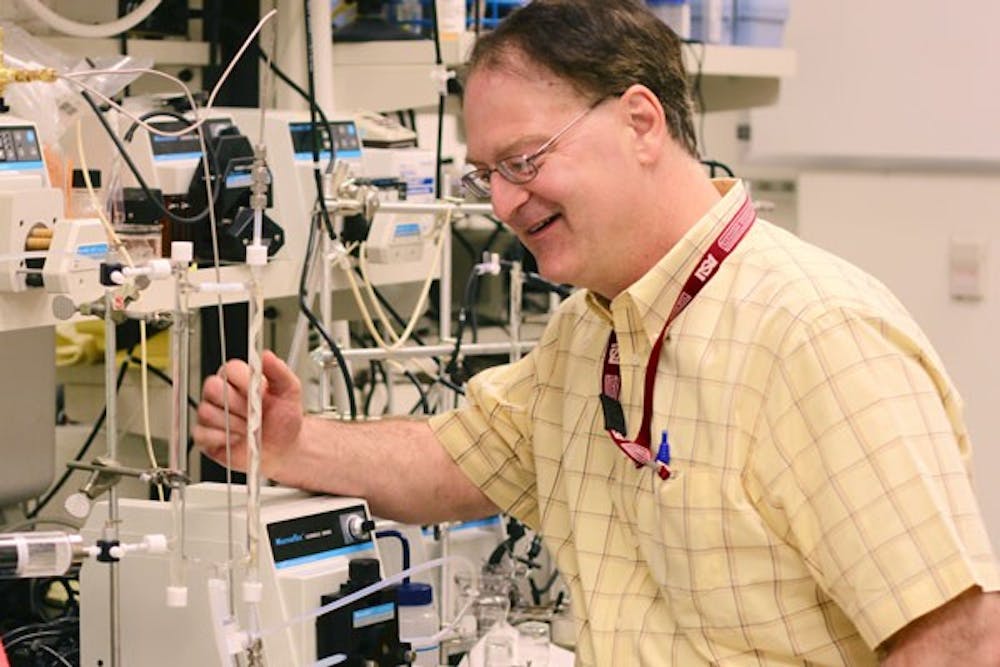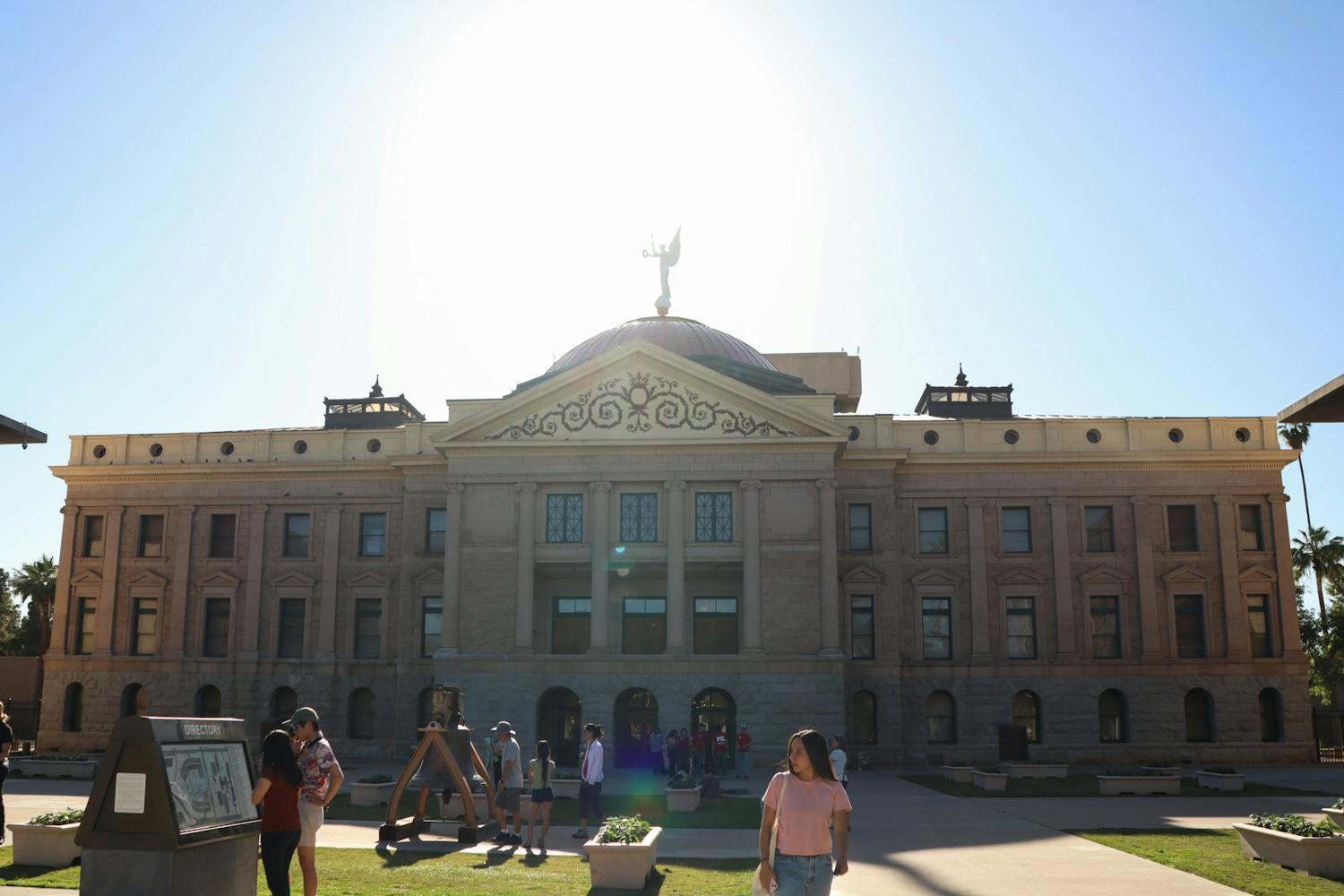Bruce Rittmann’s face beams with the pride of a new father as he points to a photograph on his computer screen of a vibrant red, “beautiful biofilm,” an integral part of his invention.
For Rittmann, an ASU professor of environmental engineering, these photos of biofilm, a slimy substance produced by bacteria, as well as photos of membranes and microorganisms, illustrate his new technology that removes dangerous contaminants from water sources, including drinking water, ground water and wastewater.
Next Wednesday, Rittmann, the director of the Swette Center for Environmental Biotechnology in ASU’s Biodesign Institute, will travel to Washington, D.C., to receive the prestigious Environmental Engineering Excellence Award from the American Academy of Environmental Engineers.
Rittmann’s invention is called the hydrogen-based membrane biofilm reactor, a technology that is capable of removing nitrate, perchlorate, selenate, chromate and trichloroethene from water.
Perchlorate, found in rocket fuel, has been a subject of recent news, but Rittmann said traces of perchlorate have been found in water sources since the late 1990s, when an analytical method to detect it at low levels was invented.
“Before then it was always out there but no one knew,” he said of the dangerous contaminant. “Afterwards, people started finding perchlorate all over the place.”
Prior to his invention, there was no technology capable of removing nitrate or other contaminants without using toxic or expensive chemicals. This issue and the growing amount of toxins in water sources prompted Rittmann to research a more sustainable and safer route.
These contaminants are rendered harmless when the hydrogen-based membrane biofilm reactor delivers hydrogen gas to the bacteria, Rittmann said.
Similar to a human taking in oxygen and breathing out carbon dioxide, the biofilm reactor causes a respiration oxidization process by using hydrogen to change the contaminants.
“This happens naturally,” Rittmann said. “We just supply the hydrogen and it’s going to happen.”
Rittmann started research for the technology in 1997 at Northwestern University and began publishing his findings in 2002 in papers and journals, eventually getting patents for his invention in 2004.
Currently, the technology is licensed by APTwater, a Long Beach, Calif., company dedicated to processing technologies that enable water reuse, and is in the works to become a commercial product. Rittmann said he expects water treatment plants to pick up the technology rather than the technology serving as a household filtration system.
Rosa Krajmalnik-Brown has worked with Rittmann at the Biodesign Institute for five years and said he was the main reason she came to ASU for her postdoctoral studies.
“He’s the best person to work with,” she said. “He’s a great collaborator and he recognizes everyone’s contribution.”
Rittmann’s interest in sustainability started as a young adult, even though the word sustainability didn’t really exist at the time, he said. When he was a college student, the first Earth Day was celebrated on April 22, 1970.
“There was a huge interest in environment at that time,” he said. “We discovered we had made a huge mess of things, and so there was interest in trying to improve environmental quality. I was highly motivated.”
Although “go green” has become a popular mantra for the current generation, electrical engineering freshman Connor Santilli said students are not doing enough to sustain the population long-term.
“Our planet only has so much to offer,” he said. “We have to find more renewable resources before it’s too late.”
Rittmann’s invention proves that sustainable living is possible, but he said ultimately a society of recyclers and reusers will be necessary.
“Our society is going to be more cyclical,” he said. “We’ll be using things over and over again.”
Reach the reporter at tafergu1@asu.edu





